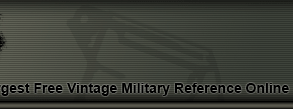|
WWII US Army M-1 Helmet Liner -
The M-1 steel pot helmet is one of the most utilitarian designs produced for a U.S. helmet and one of the
longest lasting. Many news reels and pictures show the GI's using their helmet to cook, dig, carry water
and many other functions.
The helmet is composed of a metal shell and a separate liner with a fiberglass shell. Both shells are
illustrated on the pictures below. Notice that the fiberglass shell has a metal grommet in the
front-center, this feature is known as the eyelet. This opening is where a rank insignia could be placed.
This helmet might be one of the most recognizable icons of WWII. Approximatelly 8 million helmets were produced
during WWII by a large number of companies.
The M-1 helmet was introduced in 1941. the early versions of the helmet had a fixed bail. later on
the armed forces figrued out that the failure rate in such design was greater because the force
exerted on the bail was too much. A switch was made to the swivel bail. The flexibility of this last
feature coped much better with any forces applied to the weld spot.
The item featured here is a WWII M-1 helmet liner.
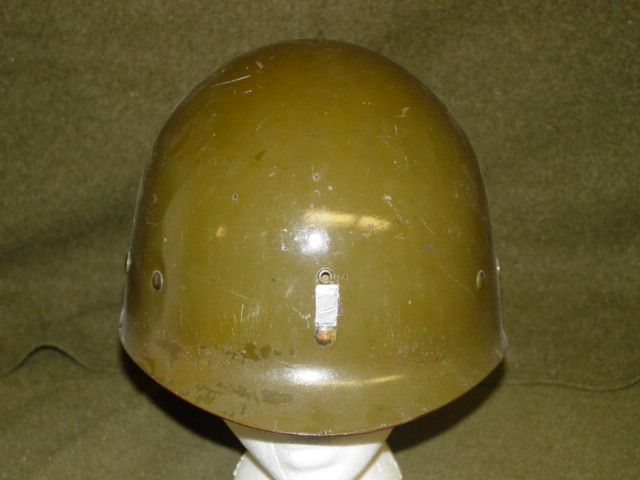
|
This page is a recognition and identification guide for US hats and helmets. Multiple
detailed photos of a specific sample are provided. Descriptions point out clearly defined
points that should be noted.
One of the most commonly asked questions is "How much is my US headgear worth?".
A price guide is included here to address this question. The value of the hats and helmets
is reviewed over a period of several years. A trend can be observed. The present worth
of US militaria in the collector's market is illustrated.
This service is provided free of charge to the visitor/enthusiast courtesy of
MilitaryItems.com,
a company dedicated to the preservation of military history and to providing quality military
antiques and collectibles to museums, institutions and the general public.
|
|
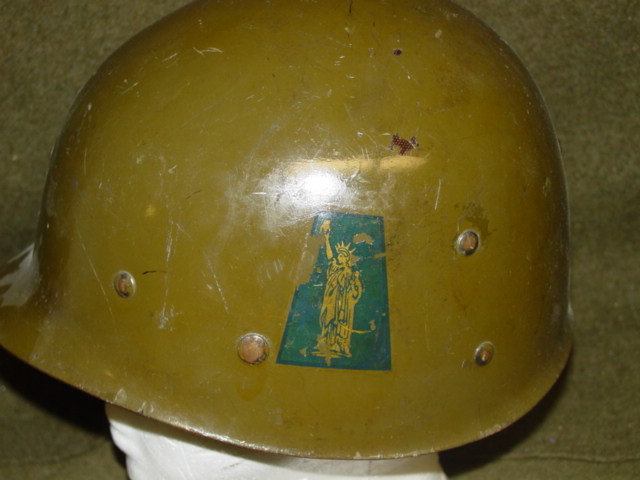
Some of the liners were adorned with stickers. Usually they represent the unit where the soldier served.
The sample shown here has two stickers. One for the 77th Infantry Division. The other is a shield that
reads "Second to none". In addition, the rank has been painted just below the eyelet.
The 77th Infantry Division landed in Hawaii, 31 March 1944, and continued training in amphibious landings and
jungle warfare. Elements began to leave Hawaii, 1 July 1944, for the amphibious assault on Guam. Attached to III
Amphibious Force, the 77th made an assault landing on Guam, 21 July 1944. After taking over defense of the
beachhead, the division drove north to seize Mount Tenjo and effected junction with the 3d Marine Division,
linking the northern and southern bridgeheads, 23-29 July. It continued to drive north, and dislodged the enemy
from positions at Barrigada town and mountain, 4 August, resistance ending on the 8th. With Guam recaptured, the
77th sailed for New Caledonia, but plans were changed en route and it was directed to proceed to Leyte.
The division
landed on the east coast of Leyte, 23 November 1944, and was attached to XXIV Corps, Sixth Army. After a short
period of training and combat patrolling in the Corps' rear, 23 November-6 December, it landed at Ipil and fought
up the east coast of Ormoc Bay to seize Ormoc, 10 December. Attacking north, astride Highway No. 2, the division
secured Valencia and the Libungao-Palompon road junction. Mopping up operations continued through January 1945 to 5
February 1945.

The liner is lighter than the helmet shell. It was not uncommon to see soldiers around camp wearing the
liner alone. A leather chin strap was provided so the soldier could keep the liner on while in movement.
The chin strap was thin. It had a black wire clip at each end. The clip was attached to the
chin strap post
riveted to the inside of the liner.
The suspension was secured to the liner. It consisted of a series of criss-crossing canvis straps that
were riveted to the side of the liner. Another section of canvis, covered with a leather strap, was
employed as a sweat band.
The manufacturer's logo was stamped on the crown section of the liner.
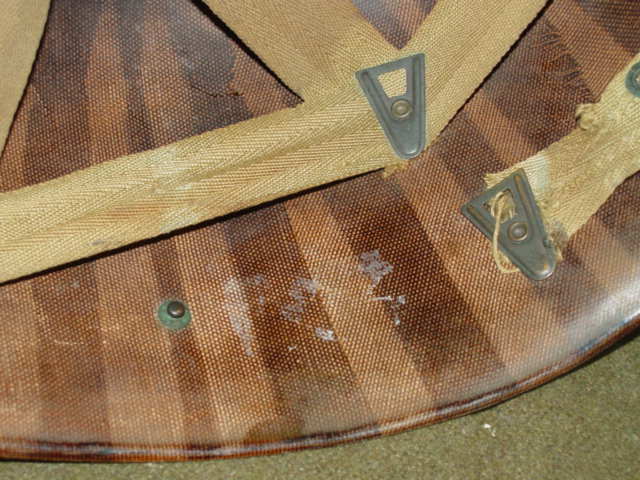
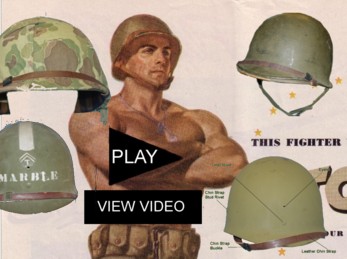
|
The "Military minute" is a series of instructional videos created by MilitaryItems.com for the purpose of
providing basic information about military collectibles. The idea is to expose people to the exciting
world of military collectibles.
The video presentation coupled with detailed photographs and written information, including a military
collectible's price guide, enhances the visitor's experience.
Whether you are a long time collector, a beginner or simply have an interest in the history and value of
each collectible, we hope that you find the information presented here useful.
|
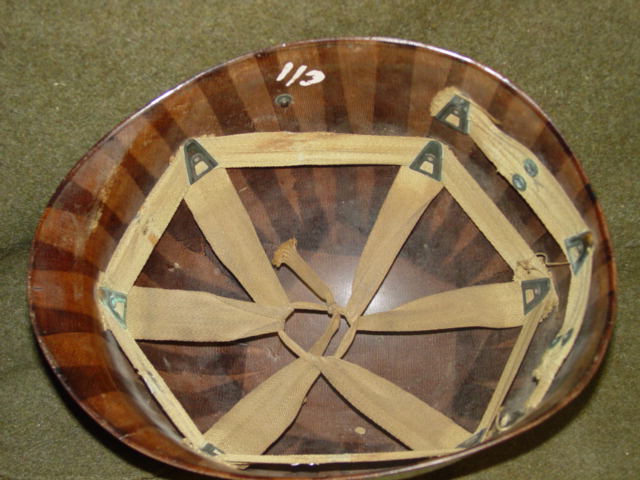
|


